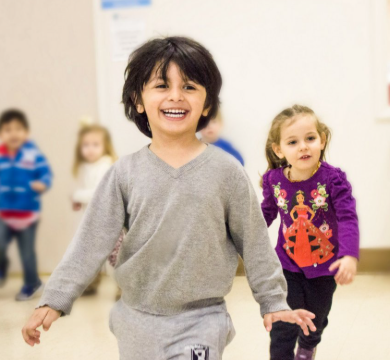Children learn best when lessons are delivered in a way that sparks their imagination. While facts and rules are important, they often fade from memory unless tied to something meaningful. Stories, on the other hand, have a natural ability to capture attention and stay in a child’s heart long after they are told. Teaching kids about healthy choices through stories is not only effective but also enjoyable for both the child and the adult. Whether it is about food, exercise, kindness, or daily habits, stories give children a way to connect lessons with characters and adventures they can relate to.
When children hear a story, they step into another world where they can see the effects of choices without facing consequences themselves. A tale about a character who eats only sweets and feels tired the next day illustrates the importance of balance in a way that feels more engaging than a simple warning. A story about a young hero who gains energy and strength by eating colorful fruits and vegetables makes the idea of healthy eating appealing. This approach turns information into a narrative journey that children want to follow, which makes learning fun rather than a chore.
Stories also help children see values in action. A story about a friend who chooses to share water on a hot day shows how kindness and health come together. Another tale about a character who learns to sleep on time so they can join their friends on an adventure highlights the importance of rest. Through these examples, children begin to understand that making healthy choices affects not only themselves but also their ability to enjoy life and connect with others. They learn that good habits are not restrictions but tools that make their days brighter.
Parents and caregivers can use everyday moments to tell short stories that gently guide kids toward healthier decisions. For example, when encouraging a child to drink water instead of sugary drinks, a parent might share a story about a plant that grew tall and strong because it was watered regularly. If the plant only received sweet drinks, it struggled to grow. Comparing the child’s body to that plant makes the lesson clear and relatable without feeling like a lecture. The child sees themselves as the hero who can choose what helps them thrive.
Bedtime is a particularly special time for storytelling. Children are relaxed, ready to listen, and more open to gentle lessons. Stories told before sleep can focus on themes like bravery, kindness, and making thoughtful choices. For example, a bedtime tale might feature a little bird who learns that flying becomes easier when it eats a variety of seeds, teaching the value of a balanced diet. Another story could describe a playful fox who realizes that resting helps it have energy for fun adventures the next day, showing the importance of sleep. These quiet moments allow healthy messages to sink in naturally.
Teachers can also use stories in classrooms to inspire better choices. A story read aloud about a character who learns the joy of running and playing outside encourages children to value movement. A classroom tale about a child who brings a colorful lunch to school can inspire others to think about what they pack in their own lunchboxes. Because stories often include problem-solving, they can also teach resilience and creativity. For instance, a character who overcomes tiredness by making healthier choices models perseverance and self-care for students.
Another benefit of stories is that they encourage children to reflect. After listening, kids often want to talk about the characters, their actions, and what they might have done differently. These conversations provide a chance for parents and teachers to guide reflection without pressure. Asking questions like, “Why do you think the rabbit felt better after eating carrots instead of candy?” allows children to share their thoughts and practice reasoning. In doing so, they make the connection between choices and outcomes in their own lives.
Stories can be drawn from books, family experiences, or even made up in the moment. Personal stories often feel especially powerful. When parents share childhood experiences, such as how they learned to enjoy fruits or why they chose to walk to school, children feel more connected to the message. Creating new stories together also makes the process fun. A parent and child might invent a tale about a superhero whose powers depend on how well they eat, sleep, and exercise. Each time they tell the story, the child becomes more invested in the healthy habits linked to the hero.
Cultural stories and traditional tales can also be wonderful resources. Many cultures include folktales that highlight values like moderation, kindness, and respect for the body. Sharing these stories not only teaches healthy choices but also connects children to their heritage. For example, some tales emphasize the importance of living in balance with nature, which can be tied to lessons about eating natural foods and spending time outdoors. When children see that people across generations have valued health and well-being, the message becomes even more meaningful.
Consistency is important when teaching through stories. The more often children hear healthy themes, the more naturally those lessons will fit into their everyday decisions. Over time, the characters and adventures from stories become guides in their minds. A child might remember the story of the playful fox and decide to rest earlier, or think of the strong plant when choosing water. These small connections show the power of stories to influence choices in lasting ways.
Parents and teachers should remember that stories do not need to be perfect or elaborate. Children enjoy even simple tales when told with warmth and creativity. The key is to keep the focus on positive outcomes rather than fear. Instead of saying that eating too much candy is bad, a story can highlight how eating balanced meals gives characters more energy to play and explore. This gentle approach encourages children to see healthy choices as rewarding and exciting.
As children grow, the stories can evolve with them. Younger children may prefer tales with animals or magical creatures, while older children may enjoy stories about real-life role models or adventurous peers. Adjusting the storytelling style to match a child’s age ensures that the lessons remain engaging and relevant. Over time, children may even begin creating their own stories, weaving in the values they have learned and sharing them with others.
Teaching kids about healthy choices through stories is more than just a creative tool. It is a way of planting seeds that grow into lifelong habits. Stories make lessons memorable, enjoyable, and emotionally meaningful. They allow children to practice empathy, reflect on actions, and imagine better outcomes. Most importantly, they show that health is not about rules but about making choices that open doors to joy, energy, and connection. When children see themselves as heroes in their own stories, they begin to take ownership of their well-being. Through the simple act of storytelling, families and communities can nurture healthier generations filled with imagination, resilience, and kindness.






